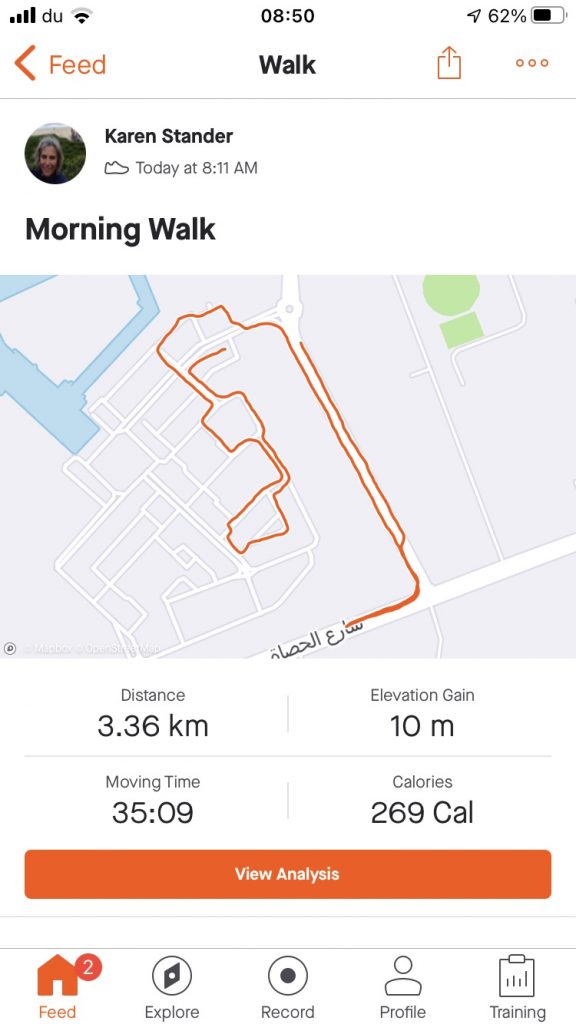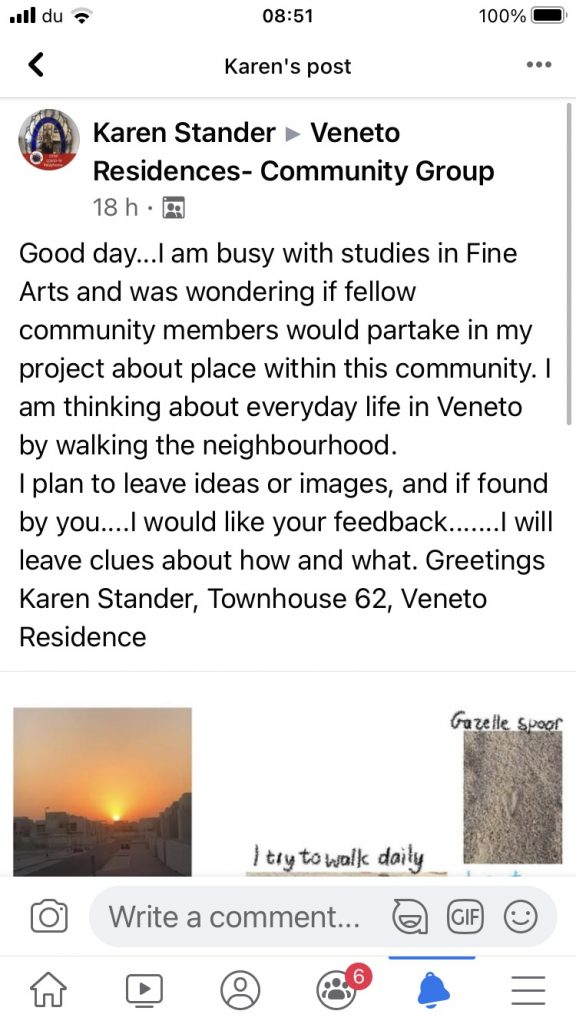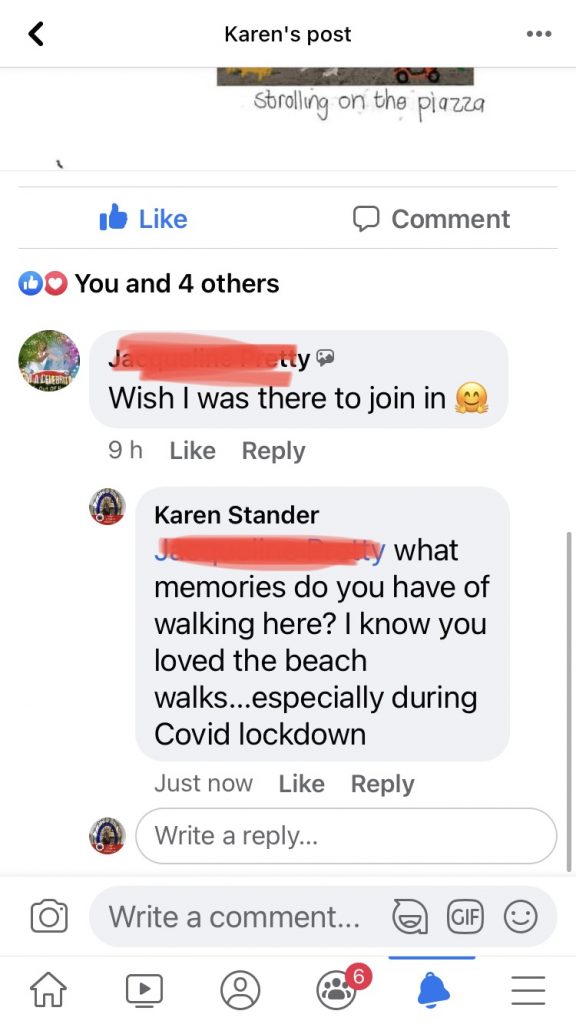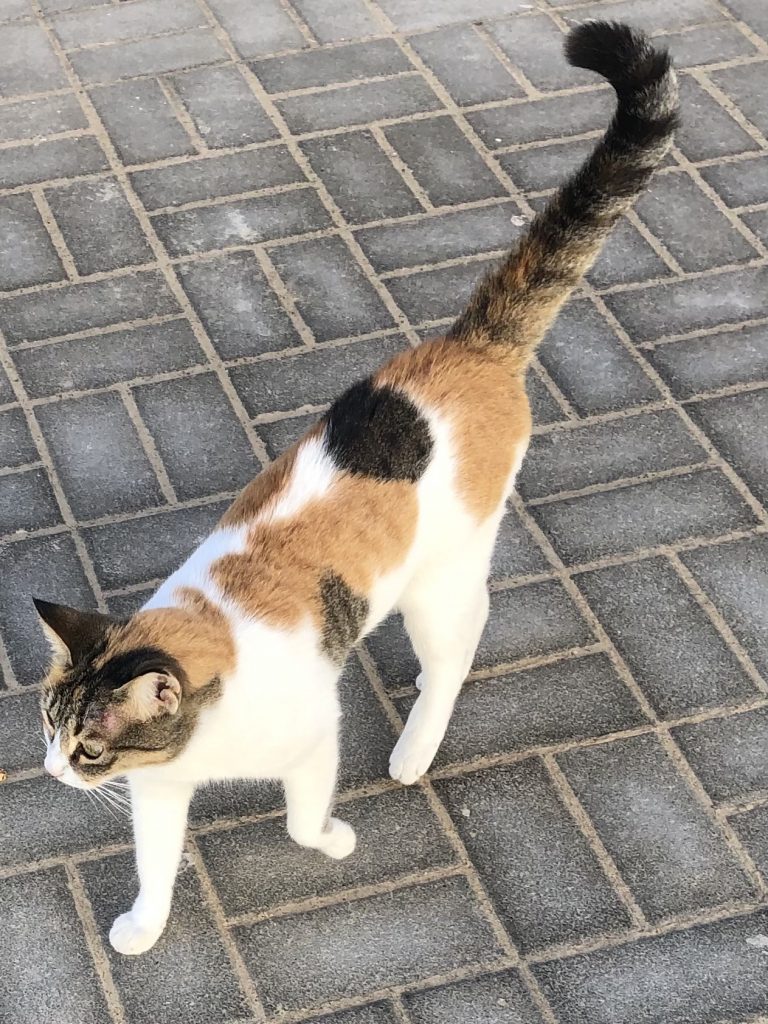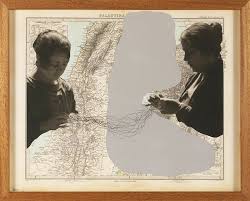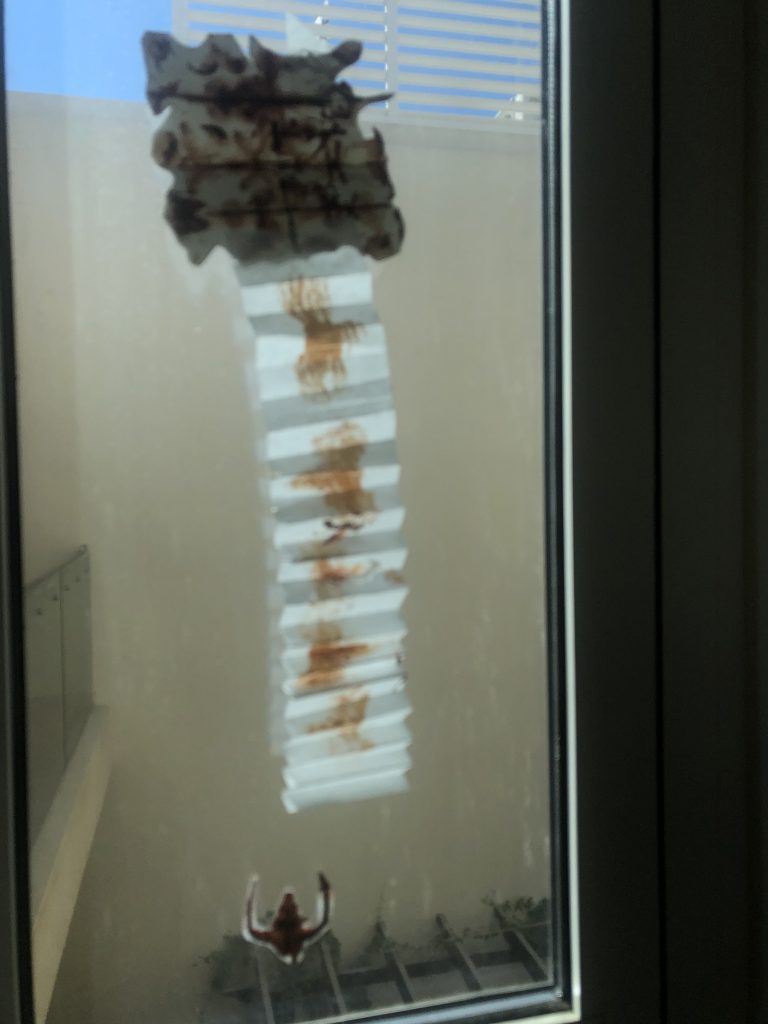16 November 2020
By now I started to read of the books my tutor recommended.
I stood still at the paragraph where (p11) Monet’s waterlilies in the Orangerie is discussed. On page 10 with a conclusive remark that “extreme forms of realism in narrative began to set streams of consciousness free from people who were having them, and the hand-holding benevolent narrator vanished.” he reminds of Monet who used colour and brushstrokes to liberate from specific form – his Lily Pond paintings.
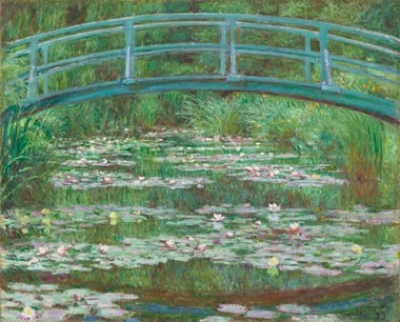
japanese garden bridge 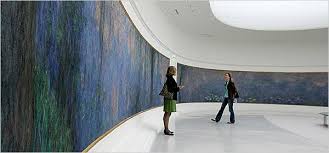
Orangerie wall paintings 
my pastel/water colour experiment
Monet called his water-lily pictures paysages d’eau (waterscapes). He was interested in reflections and he sees these fragmented shapes in his own broken brushwork. The paintings lost their landscape elements. Here, the sky has already been eliminated; one do not see a horizon line and the foliage rises all the way to the frame, he flattens the illusion of a three-dimensional space. Attention is forced onto the paint surface itself, and held there. In his later lily-pond paintings, flowers and their mirrored reflections assume equal stature, blurring distinctions between solid objects and transitory effects of light.
I started with pastel pencils – I tried to focus on colour and forms and add water brush colour strokes onto the pastel layer. It added to a blurriness and fragmented seen on the surface.
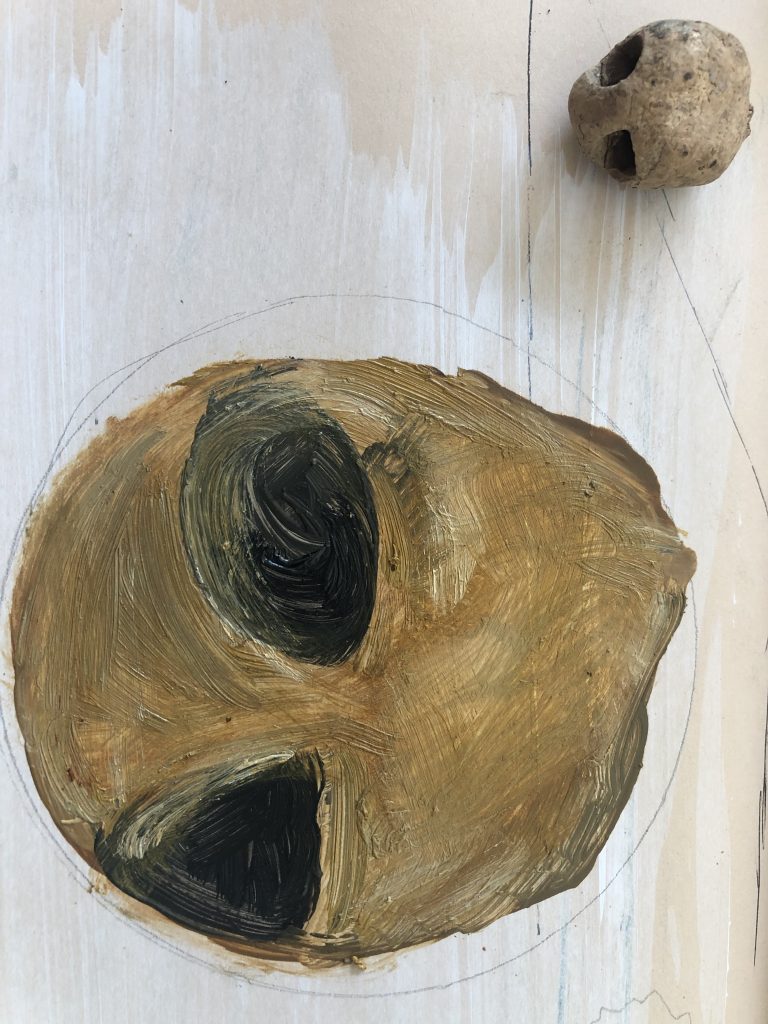
Morton, Timothy Hyperobjects: Philosophy and Ecology after the End of the World, Timothy Morton, University of Minnesota Press, 2013 – online reading on SCRIBD
I looked at the painting style of Cezanne and came upon an article by the National Gallery, by E. Reissner, that focussed on his making. (Ways of Making 2008 p 1 -29)
Reissner, Elizabeth, 2008 Ways of Making: Practice and Innovation in Cezanne’s Paintings in the National Gallery, National Gallery Technical Bulletin,Volume 29, 2008 Published 2008, National Gallery Company https://www.nationalgallery.org.uk/upload/pdf/reissner2008.pdf
24 November 2020 ideas growing
I decided to consider how I could use my walking and experiences of living in a liminal space in my practice, I plan to consider the space I live in and how the dynamics of urbanism influence life here. Our residential estate (compound) is outside of Dubai and built close to the sea, 35 km southwest of the city, almost halfway to Abu Dhabi. The developers planned to build 1400 luxury villas and low-rise apartments, but only 177 was completed before all the development was stalled. Dubai is a very modern city, built out of the sands of the desert, many skyscrapers and urban developments have taken place in this young city. We live near the biggest of the two palm islands which was created in the sea and which can be seen from space. Only one island was developed, the other was placed on hold after the 2008-10 financial crisis. There is even an attempt at creating the world – islands making up the landscape of the world as we physically can see on a map below. Lots of drenching was undertaken to create these islands, made of sand and rock and to connect them with the coast – a high cost to man and nature, the impact of which is not fully clear, but dreams to be lived in this space is still there. I remember reading about these developments as a new from of ‘Google Earth Urbanism’ as sales brochures and news reports by the media created quite a frenzy in the time between 2003 -2008, when this city has seen a major financial boost due to tourism and property development.
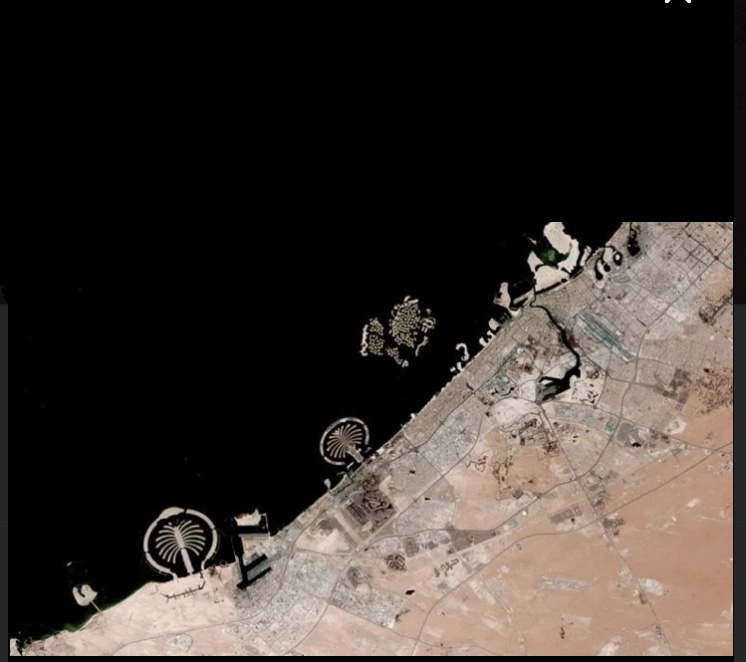
I think about repetition and what I learnt in the first part of this course. Thinking about what I am asking, is it : ‘can walking be art? My work could consider that walking is art and that art is walking. I am not even sure if I will be attempting to develop landscapes in my artmaking about walking, as it is about walking as experience within a specific space, about my engagement with my immediate surroundings – which I can define as a place. I feel encouraged to take this route for my project as I think my practice will be that of repetition for most of my life. I see myself involved as a Qualitative researcher – always subject to self-analyses.
Below is a Google image of the area where I live – marked with blue circles.

Walking, like most other outside activities, is only comfortable during the winter months, which has recently started – summer season is just to warm to be outside. I walk with a smart watch, and use my phone for photos/GPS App. I have visual data about where, when and how fast/slow I walk – heart rate, steps taken,calories burn, maps of routes I walk, photos I took. Many artists walk and spend time outside to enhance their work practice – some paint, sculpt, perform, outdoors. We chose to life outside the city as we prefer a quieter environment, and we love the beach close by.
I found the term Psychogeography and decided to explore this. According to the TATE website, “Psychogeography describes the effect of a geographical location on the emotions and behaviour of individuals.” I can understand the link between ‘everyday life’ and culture within this idea and would like to explore this in my own practice of walking. I want to explore with material what is happening when I/we walk in our own environments, my response. The bodily experience of making choices, feeling in control and to allow the flow of the path. I will look into the Situationists who were active in Paris in the 1950-60’s . Their practices included walking/drifting through the city as a means of explorations and consciousness – I want to find how the deeper meaning of walking shows its influence on my aesthetic practice. I downloaded, Psychogeography by Merlin Goverley on SCRIBD and will use his guidance as he looks into the traditions and the current way it is practised. Interesting is his take on walking as an urban affair, which is contrary to the spirit of the modern city as the gaze of the the Surrealists wanderings focus mainly on exploring marginal and forgotten areas, which brings one to political authority. He also refers to the playful and trickery sense in the walks of the Dadaists and Surrealists – here political radicalism and ironic humour played a role.
Walking as a critical and aesthetic practice will be studied by referencing theoretical and historical perspective. In my situation I could consider to look into the urban city development, more so our attitude towards spaces for living in a developing modern city as an expat living and working in this country. Another notion to take is that of the playfulness of the ‘ de rive‘ (or ‘drift’), which was focussed on constructive behaviour and awareness of psychogeographical effects. I also think this is a contradiction, as derive is about aimless wandering, not having direction, to follow your impulse. I would like to probe into the boundaries of walking and dreaming, on the level of experiencing detachment from family, friends, things, memories – probing into how I relate to all things. I am thinking about holding back and attachments to certain habits or ideas, and considering to move into that place. Whilst walking I feel my thoughts become clearer and ideas flow. I realize that these insights are fleeting and mostly sudden, but could bring illumination and should not be seen as a waste of time. Maybe dreaming could be better described as using my imagination – imagine what if… questioning my why and how.
I am thinking about the work practice of William Kentridge. I looked again as his series of work around Procession. Words like being curious, following your nose, following your instincts, leave reason out of the picture, search for new maps, new routes, new ways to do…..about thinking different and not staying in the safe place. Art history is a story about this – artists are those who do consider this. I think I am talking and thinking about process as a metaphor in art/work. I presume the hard part will be the marrying of the visual language with narrative ideas. One will be looking with a focus on philosophy behind using walking as practice as well as how (process/praxis) links to art theory. I can look at the practice of artists over the history of art who walked, as well as contemporary artists.
I want to question that if my mind is not set upon a plan, can it wander and ‘discover’ new directions?…does this also apply to my work within my studio?
therefore I want to consider if I could walk, without a purpose, the purpose is just the walk till I get back where I started.
I feel it can translate to both a discovery of connection with place (physical world around me) as well as a discovery of new/different thinking in my mind, which could both influence what I make.
I became more aware of certain smells and sounds – associations of time and place as well as memories were invoked. ( bird sounds, flowers, decaying leaves under my feet, the sand, the sea breeze, prayer songs from the mosque smells out of a home (food..) I read that smell is seen as a highly elusive phenomenon – how do we name or express it, other than with metaphors?
I also want to stay aware of my habit of making use of found objects in my work, as walking is also method to collect found objects (leaves, feathers, stones…..) I will continue to study things.
Coverley (2018:15) says that if one wants to understand psychogeography in literal terms as the point where psychology and geography intersect, “one further characteristic may be identified in the search for new ways of apprehending our environment.” It seems psychogeography seeks to overcome a process of banalisation – work share mostly a perception of a city as a site of mystery and finding the nature of what is below the flux of everyday. On the Smithsonian website I came across an artist who uses smell – Sissel Tolaas, in Berlin, who uses chemistry to explore ophthalmology, where she has a smell archive of more than 7000 scents. The exhibition was an installation with a wall painted with a smell which explore the scent of decay in Central Park – she used her own research into developing a new “nose-language” called NASALO and displayed her work at the Smithsonian Design Triennial in 2016. I read the following:
“It’s all about heightening our experience,” says Lipps. “She talks about our body as the hardware, and our senses are our software, and what she is trying to do is sensitize us to use much more of our senses than just our eyes.” Tolaas hopes that experiences with her work will help visitors to better see, and smell, that scents can be as “beautiful” as any work of visual art. “By using your nose you understand things much deeper,” she says. “By using your nose for that purpose you understand things more fundamentally, and you never forget—smell memory is the most efficient way to memorize things.”

re_search Lab, Sissel Tolaas, Berlin Germany 
Reading further I found her Nose-Language and decide to ‘use’ a few words from her language with which I can relate: DADO=dead leaves and compost; FRE=wet and rainy street after a sunny day; HOZON=countryside; HIIN=magic; KINKALAMIN= smells that comes with the wind from somewhere else; MMZEN=bread bakery; SMASA=sand; SQAHA= cooked food
( https://www.researchcatalogue.net/view/7344/7350/40/40)
I need to now take her work closer to my current studies. The artist posted on her Instagram something I thought is very relevant to my work. (10 December 2020)
In my research I came upon writings of dr Katrina Navickas who critically look at the idea of the ‘flaneur’ when one talks about walking within this idea of psychogeography. She questions whether one do think deeply whilst walking, as most people walk to go to work, or for pleasure or to engage in activist psychogeography, with a political purpose, to subvert norms rather, thus not about the streetscape. She suggests that the flâneur seems to privilege the elite perspective of the landscape viewed from a distance
walking – using the eyes of history to examine the traces and parallels in the past – is an activist practice, and one connected directly with politically activist histories
I also looked at female artists who walk; Deirdre Heddon (The Art of (women) walking: an Embodied Practice, 2010) and how she describes how women are making art through walking, whether it is in the heart of the city or in the countryside – women taking photographs, using found objects, even using knitting, as a means towards artistic discourse. She refers to the history of walking and art is almost exclusively male and how invisible woman has been in performance and walking. Her historical research starts at Rousseau and Thoreau who were naturalist and romantics and who walked to enjoy the wilderness of the landscape, and almost leave the civilised world behind. She then refers to the avant-gardists, who “seek adventure in the day-to day surrounding of the city” or urban environments, and to whom she refers to as being the ‘bad boys’. Moving to the Situationist International movement its seems more woman became involved in exploring walking. I found UK artist, Rachel Gomme, who focuss on ‘found’ flowers, she picks up as she walks the streets, as well as knitting.

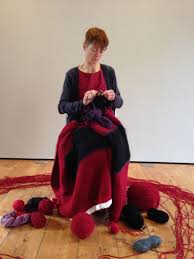
I started looking for different routes to enjoy the patterns afterwards – on these maps, see image below. What is interesting about this map below, is that it is fragmented – the GPS went off for the first few minutes of the walk – a gap in my walking, I added it with a black marker. I am also looking at how the roads and sidewalks have patterned stones – to imitate Italian cobblestones and they are in red and grey tones. I have made imprints of the patterns on paper with charcoal and plan to use it in my work. I realise that walking is a form of mark making and imprinting. I want to look at Kentridge’s Procession series – some of the walkers in his work, are recurring figures, metaphors for embodied nature of thought?
References
Coverly, Merlin, Psychogeography, 28 June 2018, Oldcastle Books. Revised edition downloaded and read online on SCRIBD
Heddon, Deidre, The Art of Women Walking: An embodied practice , 2010,
Maltz-Leca, Leora. “Process/Procession: William Kentridge and the Process of Change.” The Art Bulletin, vol. 95, no. 1, 2013, pp. 139–165. JSTOR, www.jstor.org/stable/43188799. Accessed 6 Dec. 2020.
Tate website
My walking routes/habits
When I walk in the neighbourhood (compound) I often wonder who lives in a house, how does the garden look behind the walls, where do they come from, how long have they been living here – sometimes I see a cat or a dog, or somebody coming or leaving their home to go for a walk (dog walker, kids in stroller) on their bicycles, jogging or in drive their cars. Most of the neighbours in my compound are expat families from all over the world. I wonder if they consider this living as being in between spaces and what do they do when they become homesick. I started thinking of my daily walks as encounters with memories, hope and moments – all embodied experiences with things which could normally go unnoticed. I make notes of walks on my app – cryptic notes and my photos on my cellular phone are dated.

traces of (other) walkers 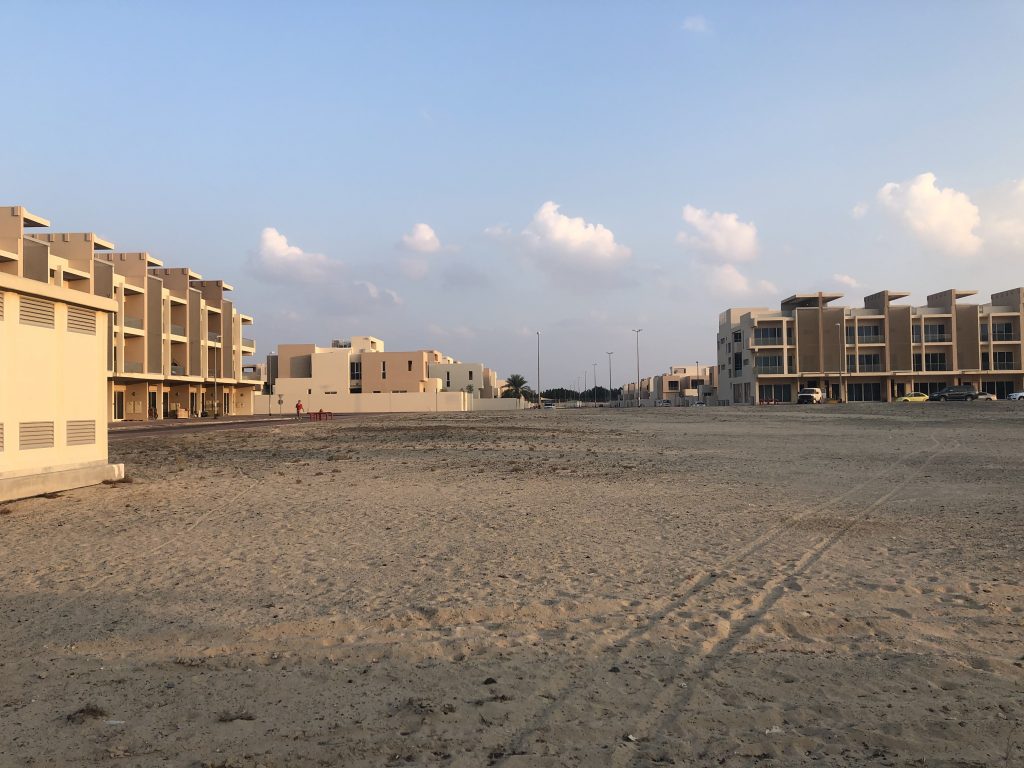
our empty piazza 
scribblings 
inside walking, oil painting and charcoal on canvas paper, WIP
I continue to write about my studio work and started a daily drawing practice (see separate blog, divided into months) Above painting is an old work I considered a mistake after an online life drawing session – I battled with the pose, the left shoulder as well as the head felt awkward in space. I decided to go back to it in terms of an idea about walking and the place I sometimes find my emotions in when I am walking inside my neighbourhood. I enjoy the quietness in my studio after a walk I think how safe it is to walk, in comparison to South Africa – there I need to be vigilant when I walk on my own, but still ….. in this place I do feel bounded by fences….. I want to explore when I walk – I want to have a feeling of freedom and safety as a woman openly ‘loitering’ on a whim. This has to do with the place I find myself in – I remember walks in the city, the longs walks on the beach promenade (at least 12+km of walkway) and the lovely walks in the desert and mountainous areas. At least the weather is now allowing one to do these trips. Do I want to share what I am thinking – it is the experience of gazing onto something whilst walking that I think I am after in my practice, whilst still holding onto the privacy of that moment. But I am walking….. I have an outsider perspective. I feel this painting is getting to that – the subject is above what can be seen, she noticed everything…inside and outside the ‘barriers’ of society.
I am confronted with many symbols when I walk – I see the minarets of the mosque at the beach (belief/hope); lots of spoor of antelope walking or moving (nature/survival); the sun set or sunrise (hope); the fresh young leaves on trees (hope), the smell of jasmine in early autumn hanging over a wall,(life, beginnings) laughter of children in the park or on their bicycles, birds nesting and chatting late afternoon, prayer calls from the mosque (rhythm of time/meditative/spiritual). These are things that make ones mind wonder as it creates space between things or questions you are battling with and the ongoing living of daily life.
I wonder how I could use this as material exploration of my walks. Below is an image of a flower I put with small mushrooms. The flower grows in most gardens and open landscaped areas around the city. The bright colour contrasts lovely with the green in these areas. Here I can view the detail inside the flower – it reminds me of the work of G O’Keefe, whom I have always admired – I like the ‘gaze’ which is so intense. I have to buy a magnifying glass (note to self), as my cellular phone camera cannot do macro shots – I need to see more. The mushrooms stayed in my studio for almost 2 weeks, before I made a drawing. I used the flower for a drawing/cut out on tracing paper for the Bosch OCA Zoom group session.


Drawing – decaying mushroom 
mixed media in sketchbook 

I am thinking about natural lost – like abscission in plants. I asked myself what is abscission – in leaves falling from a tree I think it shows the possibility to shed what is not needed at a point and time in the tree’s life. I looked closer at leaves I found in my garden – I planted this tree for its beautiful leaves and being a good ‘coastal grower’. It is my indication of autumn here in Dubai – winter is intertwined as it really does not get much colder here where we live. I feel I am reminded of letting go.
The coastal area around is a very complex space – to the left we have a busy port area, a lagune mooring area for yachts, private and public beaches, watersport areas and then also a protected marine area to the right. Entry to these areas are managed – I have never been allowed to visit the protected area, even after written requests to spend a view hours painting or taking photos. I drive to the beach area for walks – I have a circular route where I walk between the hotels, yachtclub, gholf course, which is about 5km, or I just walk on the public beach area which is about 800m wide. I have not done it in a while – some of the hotels had been closed due to the Covid pandemic and restrictions on travel/tourism. The road between our compound and the beach is a busy tarred road with no sidewalk area for pedestrians. This is a relative small space where I walk, it can be seen as repetitive. The psychogeography is just not the same with every walk – as the walk opens new things (example hear , smell or see) every single time. I keep a photo diary of most of my walks – my app allows me to share photos or notes of my walks. I prefer beach walking in the afternoon – sunset is always a show of colours to admire. When I can create an opportunity to have a beach walk – I go for it. Here I can walk further and I feel the path is set – I need not to focus on choices of which road to take – I can just go with the process and hope it can translate in to more than that what is visible when I reflect on it in work back in the studio. Meantime, I take photos, make short videos and soundtracks – my own voice or just the sounds of the surroundings.
What would happen if I share some of my thoughts about walking in my neighbourhood in the physical space – have visual images stuck on the sidewalks, a house wall, on the fence? I can communicate – ask my community if they can remember where they were the last time they felt homesick, or ask them to share a photo image of where they are within the community at a given moment. Ask them if they would like a tree park/garden inside our communal areas – currently there is just sand in the open spaces, one playground area for the children, no urban spaces for relaxation or recreation for the rest of the community. I belong to a facebook group for our community – I can consider to gather information for my exploration here.
Using Social Media I decided to put a post on the facebook group of my community and explore my own questions.
At this point I put the focus on the environment and its influence on me. If I explore the power of these things in the way I encounter them in my walks. I see architecture of the different size houses – the lines and colours – a similar modern square style design, which differs in size and its location within the space, inside the owner can give it more identity in terms of gardening and interior and exterior decor. Can I see these as a critique on the urban environment, where safety and other institutional issues comes in play? Could it come down to how we live and interact with things as commodities and about social class and identity? I will consider to compare the experience I have of walking in nature and on the farm back in SA.
My body becomes the participant – by being aware, attentive, making connections with memories and place, feelings in my heartbeat or deeper emotional experiences come to the rise. I look at how shadows and reflections touch me when I go back to the studio – I want that in my material work – that deeper pool we can sink into with our own thoughts. Open space I can look into also give me something I want to explore – landscape lines and how light falls on it to give me a sense of space and form. I also feel the ‘moment’ in these walks – nothing is just so – it is ever changing. After one early morning walk, I had a strong sense of smell – a reminder of my childhood holidays at the beach. I came back to my studio looking for the view photos I did bring along to Dubai and found some with strong connection to trees and the beach as well as with my close relatives, parents, grand parents, cousins, uncles and aunts. I sent a WhatsApp message to my one cousin (artist) with whom I have a strong bond and we had a good moment of how this could translate into art. We spoke of longing and being in a liminal space as well as what is home. Is it the place I live, hope to live, or is it linked to a memory of what home symbolise? When we moved to Dubai in 2018 I made my house my home, but I always knew it was a temporary home in the sense that we will live here as expats whilst economics of work will indicate when we go back to our home country. Home is a space we create, just like a gallery is a space created for art and artefacts – it can be anywhere.

Bridge structures on the palm fonds – as seen from the beach 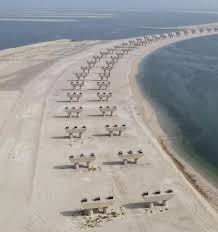
unfinished bridges as seen with drone 
abandoned office of the developers 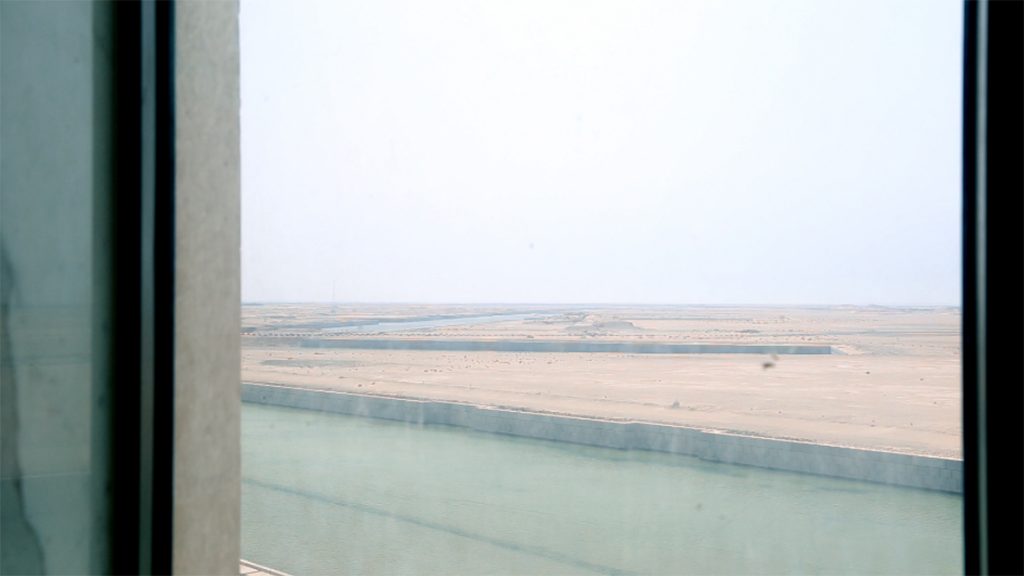

I have been thinking about looking, the gaze we find in portraits, can one have a gaze in walking, like a gaze of space? I do like above photo images of the landscape around me. One of my neighbours in my compound shared his ‘drone photos’ (videos) with me. I do enjoy a ‘birds eye’ view. Amazing how flat everything is. Below are two images taken with the drone.
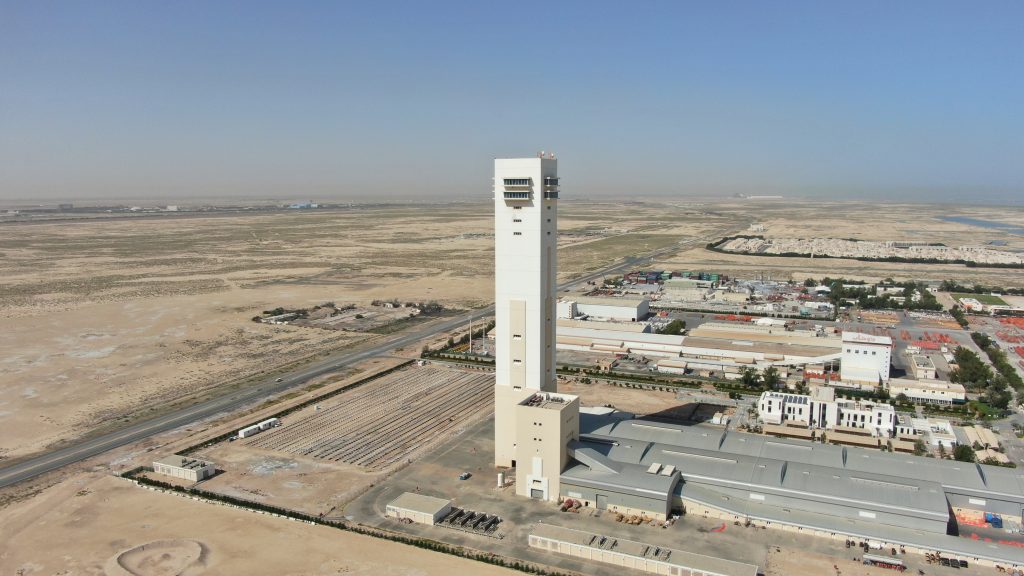
default 
default
I read that Sinclair says walking is the best way to ‘explore’ and ‘exploit’ the city. A google search for current artists who use walking as an art practice, I found the artist, Hamish Fulton, who describe himself as : ” I am an artist who walks, not a walker who makes art. Not every artist enjoys walking.” Below are some of his work I found:


SONY DSC 


Land art contradicts walking art.
My art begins with walking,
not the history of gardening.
My restraint
in the use of art materials is merely symbolic,
it would be hypocritical for me to think otherwise.
Walking into the distance
beyond imagination.
Walks are like clouds,
they come and go.
In my memory
nowhere to be seen.
All my walks are related,
from the first to the most recent.
Fulton, Hamish, 2019, Gallery Thomas Schulte, Berlin (at Galerie Thomas Schulte, Berlin)
The ‘crazy’ style paved roads in my neighbourhood reminded me how people use to work on the dirt/sand/gravel when they exit their homes. I recently found “funny” shoes in a Jan van Eyck painting – whilst looking at objects. These shoes were apparently used outside whilst trying to walk around filth lying in the streets around cites at that time. It reminds me of our comfortable clog like shoes – open for fresh air and such a contrast in the utility meaning as those one’s depicted here for use in the 1400’s. Our roads in this community are regularly cleaned by an ‘broom sweeping vehicle’, we associate filth on roads with slum areas now a days.
Our roads and lanes are wide and designed for walking. I cannot help but daydream for a moment how the envisioned development of boardwalks toward the beach (Arabian Gulf) and the Palm island would have been experienced from a walking perspective. I see tree-lined paths with connected green spaces for playing and relaxation. I had a good walk on a custom designed walk/run area along the coast – I had an hour set aside and started at a beach, called Sunset and continued to walk for 3km and turned and walked back to my car. The space is ideal for walking – measured in sections of 100m for at least 6km alongside the coastal area – it is within a residential and beachfront hotel location – public beaches, restaurants and play areas are located next this walkway, there is ample parking and even public bathroom/toilets – it is safe and can be used during daylight, as well as in the evenings.
I my walks I do meet up with our other problem, that of plastic and rubbish strewn in nature – be it the wind and/or people, this is the ugly part of walking and I am reminded of how many activists against plastic and other non-degradable consumables are daily at work. I could consider re-using some of these ‘found rubbish’ – plastic hand gloves (thick for construction site) do come in to my site regularly.

30 November: I started reading, The Practice of Everyday Life, by Michel de Certeau, 1984 (Published by University of California Press) on SCRIBD
1 December 2020 – a short early morning walk reminded me that Christmas is around the corner – homes are decorated. I think about expectations and my looking, in my gaze there is an expectation of what I will find/experience on these walks – all fragments I take with me along with my walking. I could use the shape of the fire hydrant in a work about my walks. I think at this point in this process I am thinking about my practice in different way – I realize the autobiographical ideas coming to the front, (the feelings of finding myself in a liminal space), but mostly I am aware of a focus into my own awareness, which is becoming inward – like a quietness which I can explore in my studio. I am open to more ways of searching for meaning in my materials – cutting, collaging, watercolour, drawings with ink and charcoal and pastels, oil painting. I am considering the idea of performance – improvising the walks in a performative way. I think of a walk along the treed boundary – notes on the walk and how I could translate that into a more material work.
I signed up as a member of WAN – Walking Artist Network where my focus will be on walking as a practice (connecting with place) and walking as a subject. I feel part of an online community which can nudge me to develop my own critical and creative approach to my walking practice. I read the following: WAN is based on the premise of creating a space for the development of walking as ‘a mode of art practice’ and asks ‘how we might define walking art as a medium’ (Walking Artists Network, 2011). The role of the network is not to push a specific agenda, rather it is a space to discuss and develop artistic practices in relation to walking. As such it is a fertile ground for artists pioneering the medium of walking art, while also welcoming walkers working in variety of artistic and academic disciplines. It encompasses other networks as well, such as the Loiterer’s Resistance movement in Manchester, or the Walking Institute at Deveron Projects. The wide variety of practices encompassed by WAN members, and the plethora of group identifications that exist within the network, illuminates the challenges of the definition of walking as an artistic medium. Members of the network do not necessarily identify as walking artists and work with a variety of artistic media. Indeed, one of the advantages of walking practice is its ability to move beyond, among and between groups, disciplines and media.
I do not propose a definition of medium that encompasses the entirety of this work, rather I look to focus on work where the action of going for a walk is the central location of artistic reception. This is the walk as shared process—the art work as an invitation to walk and a specific provocation of walking. In this way, WAN provides a location from which to define walking as something that is distinct from, if entangled with, other artistic practices
In her blog the artist writes the following: Durational performance. I walk over the beach, picking up stones and placing them in the many pockets of my dress. Gradually the increasing weight alters my movement until I can no longer walk; I move to a crawl, come to a stop and slide out of the dress. ( http://rachelgomme.blogspot.com/p/other-projects_1.html)
Notes I made after reading a lecture by Blake Morris and watching his work, Notes to the Novice Pedestrian (Walk 14) …..embrace improvisation but don’t get caught up in the performance of it all. I also love: “…..a wander is an improvisation dictated by a set of constraints and filled with impromptu choices” . I do value and search for a sensory experience of landscape when I walk.

I am becoming more aware that nature and culture is not so separate when we think about place, nature and culture in terms of agency, voice and body. I think is has become hybridised – we bring nature into our homes through gardening, eco tourism. In a way the environment I live in, is part of a bigger place – that of nature as well. Environmentalists, naturalists, scientists, artists are all involved in this – human and non human space. We have the desert, the sea, trees, brids, animals, oil, harbour, industry, people homes, cars, shops, buildings coexisting with a indifference or meaningfulness within place and space. We are adjacent to a Ramsar site – where the beach and sea life is protected.
My walks inside our residential area took on a different meaning when I read an article on “pedestrian shed’ – which is based on the distance people are willing to walk before opting to drive – this is an average walking speed a five minute walk would represent and measuring about 400 meters. So in developments of neighbourhoods this would be a good way to calculate where public transport should be, or where local shops or community centre should be located. This is called Perry’s Neighbourhood Unit, originally designed by him in 1929. Clarence Perry was an American urban planner.

Perry’s Pedestrian Shed 
My measurements within our community- this is to one of the ‘furthest’ points from the piazza area
One critique against this development was that the concept contributed to the development of gated communities, and even referred to as ‘a mechanism of racial segregation’. (Morphocode.com) One should not forget that the actual physical street grid and how sidewalks or walkways are designed, as well as safety alongside environmental factors will play a role in how long people will be willing to walk to a destination. Here in Dubai the heat plays a big role – most communities have small shops within different living spaces. I also read that it seems people spend longer duration on recreational walks than what they are willing to spend on trips for shopping and errands. I see this here in Dubai – now that it is winter, more people use the public areas and walkways along the beaches. We drive to the beach walkways some late afternoons, and it is more busy now than in summer – when humidity and heat is to overwhelming to be outside for longer than periods of 5 – 10 minutes.
“In a sense every great city is a conglomerations of small communities” – Clarence Perry
Ideas of city developers to have more people have access to public open space are part of this urbanism approach. I looked at our local plaza area (with commercial buildings on the surrounds) and worked out ( with the guidance of Google Earth) that it is on average around 334 meters, with the furthest corner being 448 meters of walking from most homes within the estate. This confirms that this one space is sufficient for this community. I looked at the play area for kids, only one area is developed – this is on average around 346 meters away. ( Google earth also confirmed that my walk around the perimeter is 2.5km) I see in this urban development that ideas of belonging can be developed, but could it not create to ‘inwardly turned’ or isolated ways of living? I wonder about Situationist and Psychogeology – would they have seen this development as against the natural flow, boundaries – a social construct? They are much more known for their emphasis on revolutionary politics than for cultural influence.
Will people feel connected or disconnected in such an urban space?
I realize I am still attracted to mapping – using lines and mark making to indicate walks, as well as physically indicating place – but I do not want to be so representational about my walks. I started a collage work by using an old google map print I had of a neighbourhood in Pretoria where we lived before we came to Dubai ( it was an enclosed neighbourhood, but part of an old dairy farm – my walks would be onto the farm and around the gholf estate where we lived. My highlights were the indigenous trees, birds and meeting with the cows. There was recreational areas as well as a clubhouse and open air picnic areas – a river also ran through the estate) I used drawings I made of our area and collaged it onto the paper I prepared with charcoal dust. My collage will be about truths and memories of place. I think by now I am convinced that a type of ‘street level perspective’ and connection can be gained by walking a city or neighbourhood. I do not think one should be a voyeur and look onto (down below) when walking, but contradicting that with the fact that I like aerial views. I want to read more about the Dadaists and explore my own, seemingly opposing ideas. My walking is about my own footsteps – traces I form, but that is ongoing and changing and has been formed by many others. In that way mapping can never be completely real – it changes with every walk. I bring fragments which border each other together – these are my pictorial memories of a particular walk. My mapping is a mental process of dislocation and attention to the edges as well as forms that keeps creeping up – I try a work process by applying the Collage technique. It makes me think about the work of Jean Hans Arpe I came about on the MOMA website during my research:
“Jean Arp and other Dada artists embraced chance as a tool for liberating creativity from rational thought. An account by his friend and fellow artist Hans Richter describes how Arp made “chance collages” like this one. Apparently frustrated with a drawing he had been working on for some time‘
“[. . .] finally tore it up, and let the pieces flutter to the floor of his studio [. . . .] Some time later he happened to notice these same scraps of paper as they lay on the floor, and was struck by the pattern they formed. It had all the expressive power that he had tried in vain to achieve. How meaningful! How telling! Chance movements of his hand and of the fluttering scraps of paper had achieved what all his efforts had failed to achieve, namely expression. He accepted this challenge from chance as a decision of fate and carefully pasted the scraps down in the pattern which chance had determined.1
I want to push through with this place of representation I find myself in – it is either forms which is rather formal and in patterns, or it is the trees, smells and shadows I connect with on my walks. I think here is a lot of my own identifying with change and dislocation – tensions I want to express. I also want to explore fragments of words in this space.
Reading about the Dada artists I know that they set out to critique the systems that shaped society and by this turned to new art-making strategies: examples like their attack on rationality was done by embracing chance, accident, and improvisation. One find good examples in collages, assemblages and photomantages. In terms of Collages, it seems the Dadaists took it to the widests sense, in terms of materials used. On the Moma site I read it is also found in subverted elements that had long defined artistic practice, like craft, control, and intentionality. I also want to link the research work I did on the artist, Kurt Schwitters who used two and three dimensional objects combined. In his Merzpictures, which have been called “psychological collages,” he arranged found objects – usually detritus – in simple compositions that transformed trash into beautiful works of art. Whether the materials were string, a ticket stub, or a chess piece, Schwitters considered them to be equal with any traditional art material. In my research I learnt that during his years in exile, after he fled Germany, with World War 2 still ongoing, art materials was scarce, he was very poor and lived with other artists in exile as enemy aliens at Douglas, Isle of Man till 1941. The ideas of Dada namely that the value of art is not in the work produced, but in the act of making and collaborating with others to create new visions of the world was being lived. Merz, I learnt never became ideological, dogmatic, hostile, or political as is much of Dada artist. I presume it can be said that Dada is a state of mind, a phenomenon of enablement for art.

When I started reading more about chance and intentionality the ideas of Minimalism which developed in art also came to mind. The Moma article explains more detail about Arp’s work process: “To remove his own artistic intervention even further, Arp sometimes used a paper cutter to cut the squares rather than tearing them by hand. While chance was undoubtedly the point of departure for this and other works in the series According to the Laws of Chance, the relatively ordered appearance of Arp’s collages suggest he did not fully relinquish control.” I understand that in this way I can link his work to Barth’s Death of the Author – as the artist is alo questioning the role of the artist in these ‘chance’ works – I can even look to New Materialism in terms of power/agency. It feels as if I am realising something about the power within the role of the artist – here is a play with ideas about who is doing the work, showing the work and leaving experience open ended.

I joined a collective WA group (at least 26+ people), called walkcollage, which ended on Sunday 13 December 2020 (was created on 20/22/2020). We shared experiences of walk, though sound clippings, photos and writing – It had to be about the actions and experiences of a walk, recording whilst walking – in the present tense. These messages, images and sound clips will be put together as a collage. I think the idea of listening/ seeing complete stranger’s experiences was a very ‘tactile’ real experience – hearing someone else reflect on their experience through words, photo images, video was motivating and supportive. I liked the anonymity as well as sense of difference in terms of place – some were at a beach, a public park, neighbourhood, exploring a new place……such a vast difference of experience of place as well as the reflection upon the body, physically, emotionally, sensations were discussed. I also think with the Covid Pandemic still being a threat and how our lives became so defined by isolation, these shared experiences has been good as a replacement for share experiences in real life. I felt I had new experiences about nature as well as listening, which felt intimate.
Psychogeography,page 122 discus maps and that the Situationist saw them as part of the ‘imperial project – gaining of logistical power. In my research I came upon a working paper written by Piers Fotiadis (The Strange Power of Maps: How maps work politically and influence our understanding of the world, University of Bristol 2008/2009) He argues that maps are social constructions that work politically. I was particularly interested in his arguments about meaning and identity. He writes as follows: ” Since maps and the viewer‟s interaction with them creates meaning, and Hall states that meaning is what gives us a sense of our own identity, of who we are, then it follows that maps contribute to the construction of identities. National maps are particularly apposite in this regard: the national map helps create and sustain a national identity by showing graphically the territorial shape of the state, where all that is inside the lines is us and all that is outside is them.” Here I understand it as maps having geopolitical power, it is seen and objective and truthful – we learn about and are visually exposed to them at school from an early age. He also reminds that any viewer of a map is either inside the map or outside its frame. I am thinking how we use map as metaphors – wipe something or someone off the map; redraw the map, to be put on the map, we make brain maps. I am feeling more aware about how a map frames these ideas about existence and is a construction of space.
During 2018 I visited the home of a Palestinian artist, Hazem Harb here in Dubai – at first I was touched by the shapes and forms he uses on landscape – collage work. After looking at his work and talking to him I realised how much of his work was influenced by the changing landscape (geophysical change) – he uses archives and collective memories/stories of people from Palestine and what the country used to be. The was so much lost in these works and I was very much aware how a history on a map and of people can be removed when occupation of land take place. One could say that he looks to the biography of the Occupation and is attempting to create a memory for the future, and according to him could be a ‘dystopian vision’. Some of his works would include archaeological finds, which reminds of heritage, collides with colonial discourse, which eventually results in new meanings where the voice/stories of original owners are very absent. He has worked with film, academic texts, photography, installation, collage, etchings and textile.
20 December 2020
I am thinking about Minimalist practices of artists using grid patterns in their work, and J Johns and P Mondrian and Agnes Martin and Eva Hesse, comes to mind – my reasoning is that walking the way I walk within the space that I live in, is a form of repetition and maybe my mind is trying to make maps of these walking lines I follow – it is mostly impulsive and without any plan, other than maybe time and the fact that it is bounded by areas where I am allowed to walk within this space I live in. I want to explore repetition, chance and intentionality further. I have looked back at Le Feuvre’s comments on failure – in art it is about the artist’s search for the unrealisable perfection and that failure is unavoidable conclusion in an artistic practice. ( Le Feuvre 2010:12) Le Feuvre wrote about artists who use experimentation as a process where the work do not lose their spontaneity, because failure in art is not essentially failure but is the ‘gap between realisation and expectation’, which is in effect ‘experimentation’, a key element in artistic practice (Le Feuvre 2010: 12).
I have cut up some of my collage work and tried to create circles into which I wanted to create an idea of walking a maze which I have experienced when I walk in my neighbourhood.

My ideas around urban planning and the use of the 5min Neighbourhood Unit of Perry (written about earlier) refers to this work.
I have also made circles in a OCA student workshop session and plan to use it in this process of repetition and chance linked to walking.
I have seen Duchamps, Network of Stoppages, 1914 and it resonates well with my ideas. I realise that my intuitive reaction to these works is not orderly or diagrammatic, but more of a biomorphic bodily reaction to the 400 meter measurement.
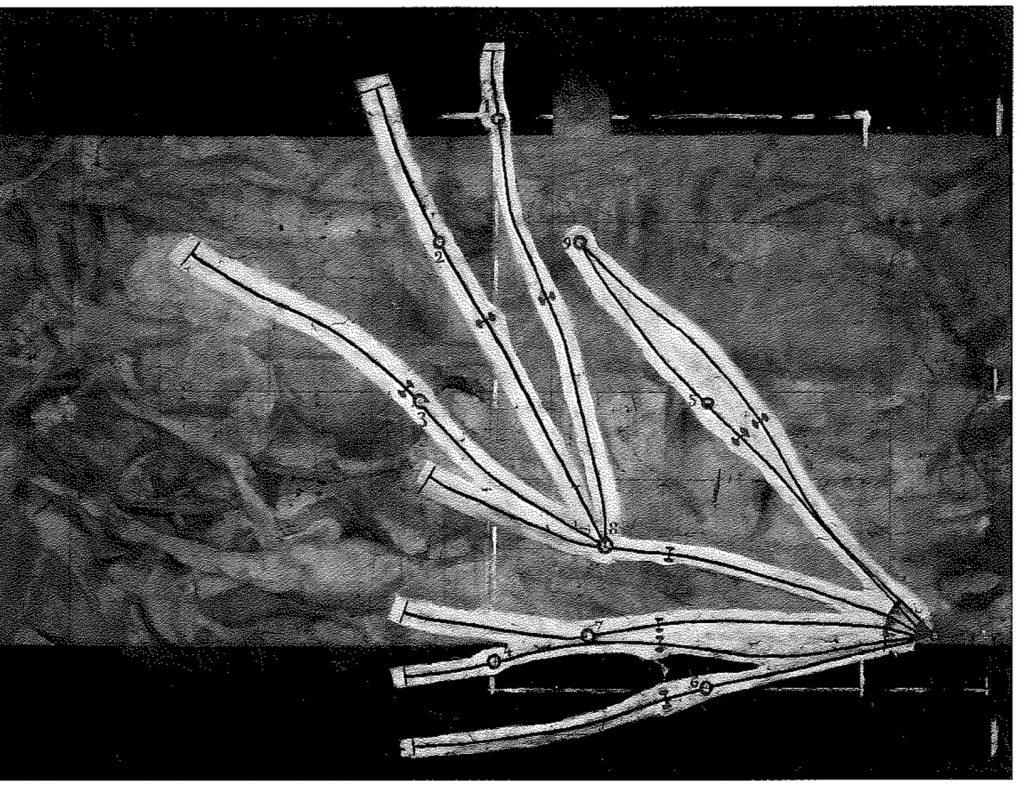
Benjamin Buchloh writes that above painting of Duchamp indicates the signals to the opposition in drawing between the “authentic corporeal trace and the externally established matrix”. (Buchloh,p 117) Duchamp used the ready made thing, namely a standard metre and re-imagined it into three different works, to show that the idea is not just an abstract tool, but through his power of choice he made a different selection of the idea.
On the Moma website I read how he created the works, by cutting three pieces of thread 1 metre each and then dropped it from 1 metre high onto 3 canvases. The threads were then adhered to the canvases, preserving the random curves they had assumed upon landing. He made templates of these by cutting along the profiles of each fallen thread, the canvases served as templates for three straightedges, which a draftsman can use—wood tools that retain the length of the meter but paradoxically “standardize” the accidental curve.
Duchamp’s deliberately useless toolkit subverts standardized units of measure, while simultaneously poking fun at the scientific method. The outcome of his ‘experiment’ reads like a mathematical theorem: “If a straight horizontal thread one meter long falls from a height of one meter onto a horizontal plane twisting as it pleases [it] creates a new image of the unit of length.” (Moma.org) I read that he felt this work was the starting point for his change in direction away from ‘retinal art’ In the doctoral thesis I read that Kuh had a conversation with Duchamp on the work in which he said the following:
“(3 stoppages)…was really when I tapped the mainstream of
my future. In itself it was not an important work of art, but for
me it opened the way – the way to escape from those
traditional methods of expression long associated with art. I
didn’t realise at the time exactly what I had stumbled
upon.” (Kuh 2000: 81).

It is clear that Duchamp was searching for more – his interest was in what lay behind the work and the concepts contained within, rather than the superficial image. It wasn’t a sculpture and it wasn’t a painting. It was a box containing an ‘idea’ (Mink 2004: 44). It might be posited that Duchamp sought to explore the intentionality of the artist in producing the work. Yet chance in the context of Duchamp’s work might be described as ‘accidental happenings’. When Duchamp was asked about the impact of the
accidental on his work he said: my first accidental experience (what we commonly call chance) happened with the Three Stoppages, and, as I said
before, was a great experience. The idea of letting a piece of thread fall on a canvas was accidental, but from this accident came a carefully planned work…many of my highly organised works were initially suggested by such encounters. (Kuh 2000: 92).
What I take from working with chance, is that it removes what I like or dislike from the practice – spontaneity can come to the forward and the experience lies in the process.
My attraction to Hesse is also because I know she committed to a struggle to ‘paint herself out’ – something I believe I need for my practice , the material that I need to produce, almost my own existential crises – translating my looking onto my world into work. I also read that she was strongly influenced by De Kooning in her early years. Her figurative early works she produced was done in the creamy, thick impasto and use of pink and fleshy colours. I understand her questions she investigates in these early works are that of proximity and distance – using line to create a distance between the figure and the space.

In terms of her material use I learn that she has used soft and found materials such as rope, string, wire, rubber and fibreglass. latex . She was interested in how the materials took on organic forms, which she used to create ‘eccentric’ freestanding sculptures.
My material explorations during this research:
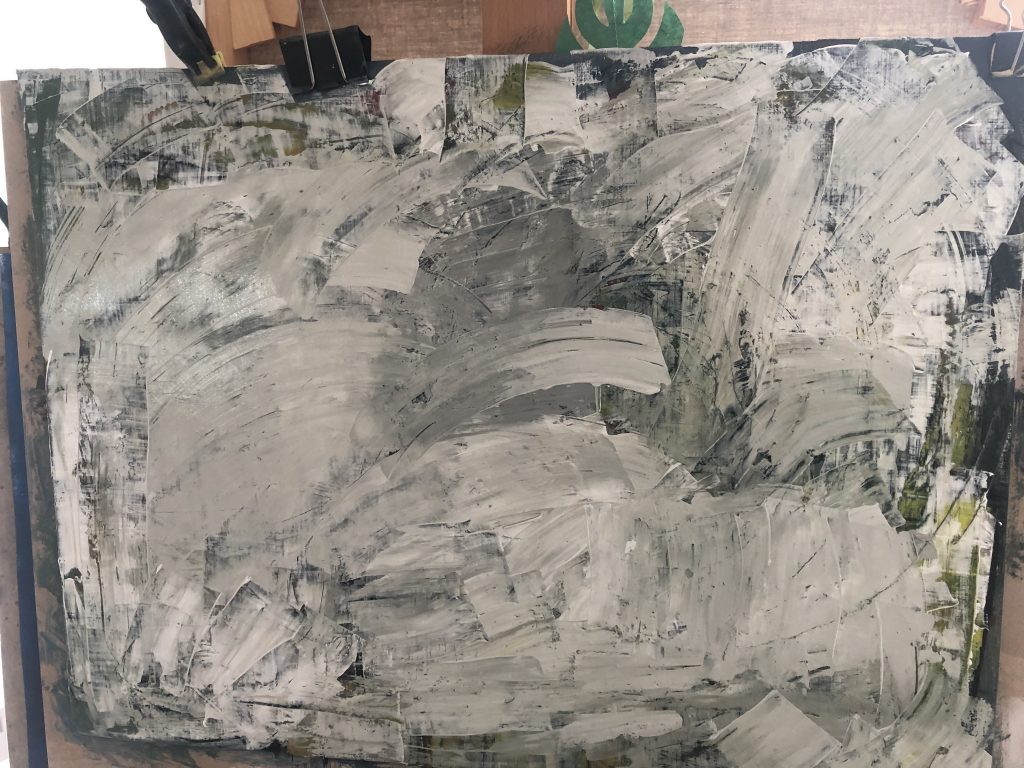
Canvas with gesso 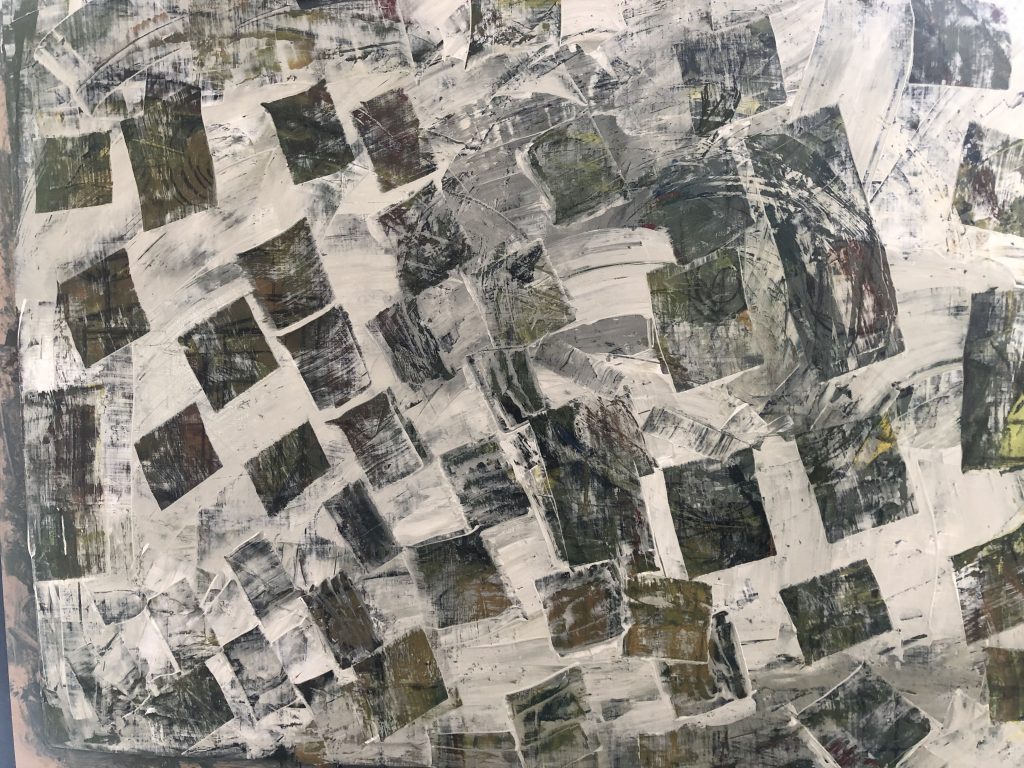
Mark making on Canvas with gesso
The work, has a history as I have been working on the canvas before I covered it with gesso. I felt that here is a certain randomness happening – it was still my hand doing the work, with a big scraper and almost lifting wet paint and revealing form, but with no plan/outcome expectancy in mind.


During above works making I experimented with free flow line making and other shapes – mostly from my walking memories. I added colours I liked and started writing onto the canvas – I was not happy with the direction the work was taking and decided to leave it a day or so and come back to it. In above work I call Canvas with gesso I like the space that was created between the random forms, not predetermined measurements or ratios – I realise they are not fully accidental, they give the idea that they are trying to fit into the space because a predetermined factor was the size of the canvas and the materials. The forms (mark making) can present a thing, a thought, perception (noesis) or a feeling – they are not bound by the space they find themselves in. The more I look at the work, the more chaos I find – created by chance, created by me searching for the influence/power of chance.
Below: I wondered about re producing the work – I placed a thin velum paper on top of the work and tried to ‘copy’ the lines the of the forms.

I would like to explore more with organic lines as well as size – thinking of ink or oils flowing onto paper and other supports such as clear film/transparent.
I read that Merleau-Ponty reflects on perceptions of space:
“space is composed of a variety of regions and dimensions,
which can no longer be thought of as interchangeable and
which effect certain changes in the bodies which move
around them…we have a world in which objects cannot be
considered to be entirely self-identical, one in which it seems
as though form and content are mixed, the boundary
between them blurred (Davis 2004: 50–51).
Space is a mixture of areas around and between objects whether they are
sculptures in a gallery or blanks on a canvas or paper. In my practice there are no pre-determined ratios of space to drawing and the non-figurative images created are not, and cannot, be pre-designed or delineated as any specific object, ‘they are what they are’ (Stella 1966). This is because they are created by chance influences
Cultural Value of walking – thoughts, ideas, research
Today I walked along the coast – on a proper walkway. I am thinking about a walking and writing group I recently joined, called Shorelines, which they describe as – “a dividing line between land and water” (Shorelines – writing about place, a post in August newsletter) The post was about poetry – recording stories about a ‘geo-located’- calling it a ‘place cast’ (sound pieces) In Vancouver city a Haiku Festival being hosted yearly by the city explored ways in which people could text haiku and then these would go onto a ‘geo located map – Haiku Encounter was created. The fold your own magazine was created with the Haiku poetry of participants. I have looked at a few of these publications. I was exposed to Haiku by a OCA tutor workshop – dr Dan Robinson earlier this year. It is poetry with a poem of simple lines – three lines of five, seven and five syllables, respectively.

My Haiku poem after walking this morning: 24 December 2020
The walkway invites,
Sand & Sea share
I travel lite
I discovered a book by dr Kerri Andrews, after listening to a podcast about her research into walking woman, by talkinwalking.net. A quick look into the book revealed that she looks at 10 walking females, who also wrote and reflect about their walking experience, (one could say finding cultural value in walking) over the span of 300 years. In the foreword, Kathleen Jamie writes the following: “As humans, walking defines us. We are the two-legged apes. We walk and we talk. We are the thinking minds – thinking in language, more often than not. The rhythms of our walking and of our thinking are one. ” (Kerri Andrews, Wanderers A history of women walking) The idea that comes forward in the book is that different landscapes can have different meanings when walking – women have access and their experiences are not defined by how men described these experiences, or an unwelcome tradition to women. One is aware that women still have limitations which pertains to safety of walking alone, but that these limitations can be creatively addressed, as has been done in the past. Walking was done for more that pleasure, it gave women dignity, health, self-worth, companionship, connection to friends on a spiritual as well as intellectual level.
Andrews chose women who was inspired by their walking, but how also were writers and used reflection about walking. She covers writers such as E Carter, D Wordsworth, Virginia Wolf, Nan Sheperd, Anais Nin.
I became aware that this space I use for my daily walks has a long history – I would not know and research around the areas history did not bring much insight, but at least I should acknowledge those that came before me. The area’s history can be traced back to 6000 B.C when the area and the surrounding region was referred to as Arabian Peninsula. i would like to find historical evidence of this part of the city prior to the development of the harbour and subsequent development. I had once, in an environmental report read that here used to be a fresh water supply which was used by travelers who came with boats.
I feel I became more aware of my own sense of identity which is linked to places, as well as more sensitive to the identity of this culture, which is very much a young nation dealing with rapid growth of wealth, and upkeep of cultural and social traditions within a modern world . One of my favourite walking areas in the city is around the old part of the city, called Deira, Bastakiah, Dubai Creek and Bur Dubai. In a way these districts stayed intact with efforts to keep to the traditional architectural style – areas are around of the oldest homes and Souks (markets, like the Gold and Spice Souks) in the city. These are also areas that tourist like to visit. Below is a photo of a local Emirati lady walking in Bastakiya district
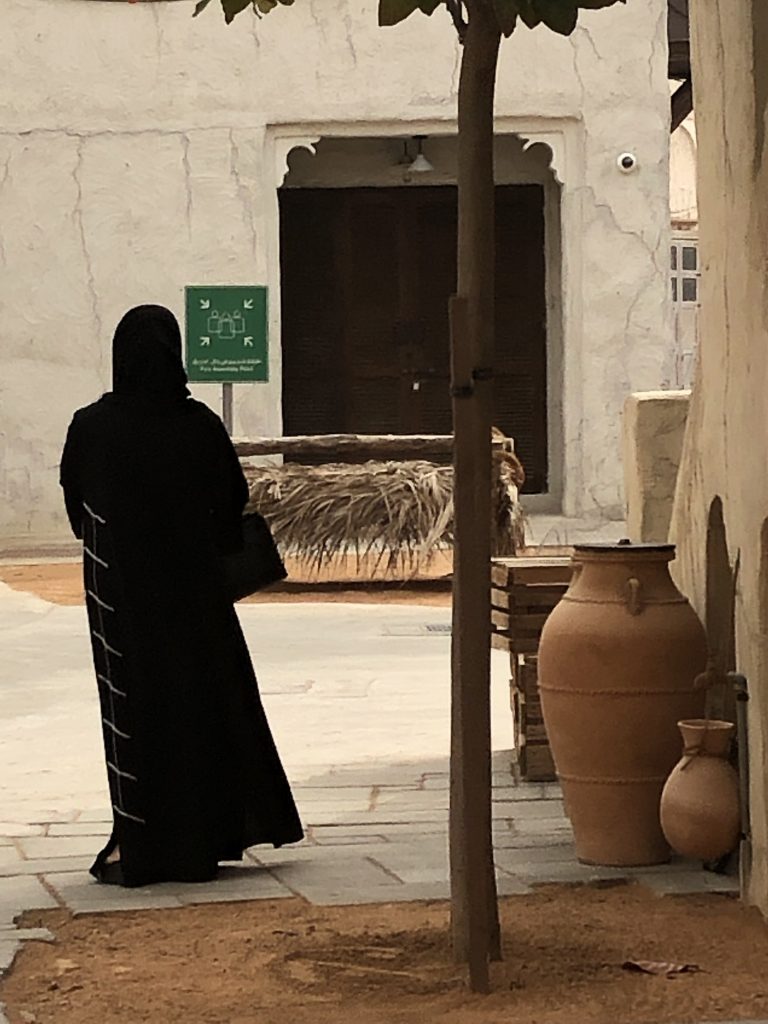
( found the walks around the seaside most conductive for her thoughts and it seems walking was her inspiration for her poetry and writings. ( p 39) I will add to this part of my blog as I continue reading the book.
Thinking about relationship art and walking 27 December 2020
Having almost finished most of the reading for this part of the course I felt that I made great discoveries in the readings of the work of Nicolas Bourriaud (Form Relational Aesthetics, 1998) and Miwon Kwon ( One Place after an specific art and Locational Identity) as suggested in our study material.
I found recent work two artists very inspiring and I feel I would like to push on with my ideas about shadows and light for the Assignment of Part 4 of this course.
Below is the work of an Indian street artist (pseudonymous name) DAKU. This is a text-based work consisting of a fishnet structure which hangs above a pedestrian street – sunlight pours through and cast shows on to the street – these are are phrases about the passage of time, like, Time moves;Things take Time; Time flies over us, but leaves its shadow behind; Time fades. (I am still trying to find the date it was installed and if it has been removed yet – seems it was installed during 2018/2019, according to an article I found in This is Colossal, January 2019) I could find that this street was named after the memory of the end of Portuguese rule in India and the area is a historical latin neighbourhood, Fontainhas. It seems the artist worked in collaboration with the Serendipity Arts Festival and his work was part of at least 70 projects run over that time. Through a residency for street artists, the festival tried to excavate, explore and imagine the landscape of Goa. Goa was the point of departure, and invited artists developed works reflective on the small cities cultural history, while also on its possible futures. (https://www.heraldgoa.in/Cafe/Goa%E2%80%99s-capital-to-come-alive-with-colour/140044)


I relate on many levels with this work – I admire the scale and site – within the daily life of ordinary people. The fishnet above reminds me of the fences around my compound, which have given me so many frustrations as to the fact that I feel bound and restricted by them, but also know that it protects me and my community. The words he use is thought provoking as is the idea of using the sun to ‘write’ these words. It is surely a place to find yourself and contemplate the passing of time, which is inevitable for all of us. The work is found in the city, Panjim, Goa in a street called, 31 st January Road and is a temporary work.
The other artist, Mubai based, Jitish Kallat, works developed during what he calls an ‘accidental activity during a fortnight of self-isolation at his studio’ Jitish Kallat has also been involved in marking the passage of time in his work with drawings that record natural elements, where he attempts to alter his intuitions and perceptions. I saw of his work at the Venice Biennale in 2019, where he was part of the Indian exhibition with an old work of his, Covering Letter, 2012, see below. The Indian pavillion was themed around the life and work of Mahatma Ghandi, and this work is a letter written by Ghandi to Hitler 5 weeks before World War 2.

I found his recent drawings, titled Circadian Study very intriguing and exhilarating. The drawings started when he was doing a daily routine of watering plants on his studio terrace and he coupled it with a practice of tracing contours of shadows from fallen twigs. He described his process as works as drawings about attention and observation. He informs it by using a green and red lines – drawings with watercolor pencils, which registers a position of the sun relative to the tree-stem at different moments – recording the shifting shape of the moving shadow. (viewing room.naturemorte.com)
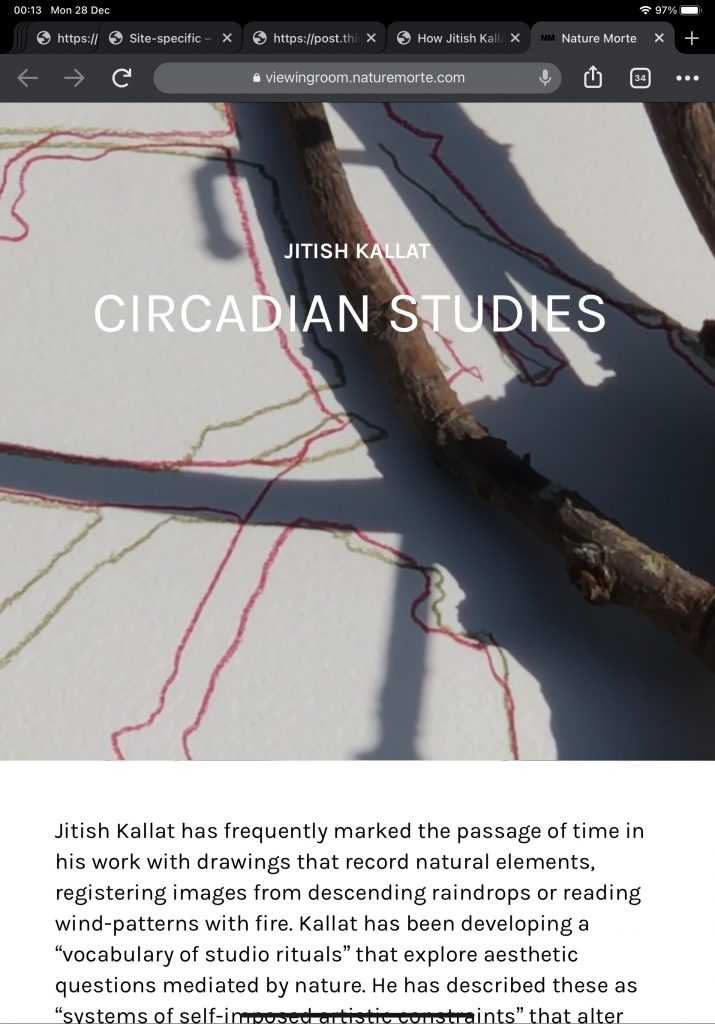
This reminded me of my attempts with the cut outs stuck on windows along a corridor to my studio and my daily photography of the shadow casts on the wall and floor tiles. I look at it as an exhibition space which change over time – there is only an exhibition for short space of time, when the forms display on the wall and floor, (moment of ‘exhibition’) and as the sun moves it changes daily. I have no control over the ‘exhibition’ in terms of when the light and shadows will cast as well as the duration of the ‘show’. I am an observer and trying to experiment.
Kallat explained that this process became more complex and gained meaning over a period of time, as he would go back to the drawings (tracings) – hydrate the two lines and see how the colours would be secreted from the two different coloured lines and as he say – ‘exchange energies’. He describe that the paper did not feel like a surface, it became more like a “field of impulses: hemoglobin and chlorophyll, night and day, oxygen and carbon and the fallen twig as a repository of carbon and breath exchanged over time.” He would let days pass between revisiting these traces, and what he find was “drawings being to emerge in the gaps within the tracings, small annotations that speak back to early intuitions, closing some kind of an inner loop within the work”

This is so much what I found happening with these Decal technique works I pursue with after a workshop with OCA recently.

On the MOMA website I read the following about Decalcomania: “It is a transfer technique, developed in the 18th century, in which ink, paint, or another medium is spread onto a surface and, while still wet, covered with material such as paper, glass, or aluminium foil, which, when removed, transfers a pattern that may be further embellished upon. The technique was adopted by the Surrealists to create imagery by chance rather than through conscious control.” In French it is “decalquer” (which means to copy by tracing) I like the idea of no preconceived object. When Gilles Deleuze and Felix Guitarri describe ‘rhizome’ they define decalcomania as the sixth principle of the rhizome:
…forming through continuous negotiation with its context, constantly adapting by experimentation, thus performing a non symmetrical active resistance against rigid organization and restriction.” ( Deleuze, G and Guitarri, F, A Thousand Plateaus, 1980)
In Kallat’s work he shows how he worked within a creative flow and staying open and responsive to inquiries that trigger work, most often, in the first place, when one cannot really talk about these transitions that take place, but can see it in retrospect. It seems he looked at Stanley Kubrick’s experiments with light and colour to stimulate his own creative process. I look at these works as visual descriptions of the experience of the materiality of paint and the other materials I worked with – the experiments and letting chance take hold can be seen as my formless inner experience – but here is also a social phenomenon, it has been produced before and was even considered within Psychology, but art tried to reclaim it though the Dadaist and Surrealist movements. I enjoyed the spontaneity as well as almost meditative process of making these forms, in contrast with making a painting. Nothing stands for/ means something other, than that what was created. I could look at a Pollock painting and see the same phenomenon happening.

In my course POP I read about Pollock and I conclude that his actions, physical involvement in making his work, assisted so that his own conscious thought was not part of the painting and making. He said he was not aware of what he was doing. I like to think about his as an extension of the artists own being – getting involved with the materials – working and the accomplishment of that working.

In a New York newspaper ( Miller, 2018) I read the following about above work of the artist:” For the series he calls “Rain Studies,” Kallat uses watercolor pencil to mark paper with a dark circle, then takes the drawing outside in the rain during monsoon season, which usually lasts for three to four months in Mumbai, leaving the work exposed to the elements, the splotches of rain making starlike dots on the dark circle. The drawings end up looking like astronomical charts, and the final product is mostly out of Kallat’s hands. “It’s almost like me not making the work,” he says on a recent visit to the gallery, where his show is being installed. “It’s nature making it.”“

The work seems to be done on graphic paper with black and sepia ink. It looks like blotches, then drawings inside/alongside them.
MH Miller, 2018, An Artist Who Leaves His Work Up to Nature — and Chance New York New York Times April 30, 2018, accessed online on 28 December 2020
Thinking about phenomenological approach and the assignment: a search for a clear insight into the meaning of my walking experience. Reality depends on the degree to which I can perceive it from different levels of consciousness. ( what I feel, think when I walk and how I link that to previous experiences)
- Is it about the immediacy of experience by reflecting on it that my walking (can) create meaning back in the studio – output of work?
- I am asking myself if my awareness when I walk is sensitive to something known, but which is not necessarily something I need to verbally identify, a connection with something basic or universal in all humans, but which I neglect and became desensitised to?
- Something like intuition, sensitivity, receptiveness. Heidegger, when he talks about the self engaging and being, writes about “a certain submission to what is, so that this may reveal itself`”
Drawing/Painting: on a sheet of canvas paper I made some ink blotches, sprayed water and covered the paper with a second layer of paper. When it was dry I used a found piece of a tree branch I collected on one of my walks here in the compound and traced the lines of the shadows of the piece of tree, onto the paper. After a view minutes I followed up with another line and repeated it a third time. The first drawing was made at 10:40am , then again at 10:44am ; and at 11:19 am, on the same day. I realise that any expected result are open to failure as I am trying to generate or improvise new processes as time moves on – I work on a wait and see basis – the ink dries and I look with the intention to create further, but it can also result in a failure. I feel it is unavoidable and something I have to make peace with if I want to get to something more meaningful within the making process.. For the moment it is being here – showing up and doing the work.
I found a good summary of the artist in the Sculpture magazine (Cole, 1 July 2016) “Richard Long’s practice involves walking great distances in the wilderness and then pausing to make works referencing natural and cosmic phenomena experienced along the way. He uses walking, therefore, as both medium and measure, and his works act as a direct response to the world in which he lives. This way of working offers the potential to make sculpture anywhere and at any time, free from the constraints that can otherwise arise with producing art. Long leaves a mark or arrangement within an ever-shifting elemental terrain that exerts its own laws of regulation over the end result. This is his way of expressing ideas about time and space, and what it means to be human when removed from the cacophony of contemporary life. Long is considered one of the most important artists of his generation, and he has sited sculpture on all five continents, as well as in many of the world’s most significant galleries and museums.”
I find his practice a good way to critique the institution, look at phenomena and using walking in art making. As he continued this work practice he learned to respect his sites, understanding with it the impact of making work which can harm the environment and seeing the sense in keeping these sites ephemeral, respecting indigenous cultures that came before and that it is not about owning the land/space, but respecting the fact that he as an artist can be part of it.
4 Janaury 2021
Improvisation research
I listened to a podcast on Tate: The Art of Improvisation: what happens when we go with the flow (22minutes) The work of artist Frank Bowling is discussed as interviews are held with musicians, artists and dancers. The interviewer describes improvisation as a mysterious force, admitting that there is no one way to do it. Listening to their descriptions of joy experienced by going with the flow – improvise and responding to stimuli, being spontaneous. Ideas of never having a fixed idea, leaning into your skills and influences, but understanding that there are always chance elements that are out of your control.
Bowling see the energy and happiness in this process he has followed for more than 60 years of art making with work that embrace chance and rythm. It is important to understand he has years of experience of ‘putting paint onto a canvas’ – he has learnt to use the energy of the paint – use it, by allowing this flow to happen when he works. I learn about the effect of time, place and mood (can I say the what, where and how)
Failure research
I listened to a podcast on Tate: The Art of Failure: What does it mean to fail, and how can it lead to success? (26min)
Cannot succeed at a work of art, less you dance with failure – about using failure. ( Lubaina Himid) Not being precious about how people view you – as flawed.
Scotty looking at work of L Freud in Tate Britain – how the art-world translate, always about fat as failure, pantomime – above the work the collaboration with the sitter, her body, her nonchalance that worked for the piece. A novelist talks about visiting a gallery/museum, the expectance of experiencing meaningful art, just because it hangs, you have to like it. Look fast, then go back to what speaks to you. Critique we get – said your work is awful, a failure, mediocre – uncomfortable discussion. Who defines it? whose taste prescribe it? Is the notion of failure not flawed? On being self critical – Solomon building temple in Bible (perfection) Looking for the perfect blue, not look through – ecxpectations (strive) to be perfect, look for the perfect oil colour, it dries, then it is less, you moved through that perfection you had a glimpse of – obsessive compulsion. Maybe we all have some of this – keeps us going, it never finish.
About slowing down – clench ego, unclenching – letting go. See it as an ego thing – failing your ego, not you.
REFLECTING ON WORK DONE UP UNTIL NOW:
Looking at how I pull apart my works and writings in this course – then continue to go, trusting the changes I felt I had to make, but finding myself in a very uncomfortable spot, fear of rejection. I find myself at a place where I feel I have not gotten to execute an idea – my assignment (4), not quite what I set out to do, unsure if my metaphors I used is properly translated or articulated so that my readers/viewers will understand. I think it is a fear – not connecting to the work or expected outcome, like for the viewer to connect with the work, does it talk to the viewer and the viewer can talk with it. Does the viewer see that I am having this type of conversation when doing this work?
Podcast: The Art of Dreaming
“To experiment how far I can push” To entertain the impossible – the never project (complicated, to expensive due to funding) To daydream – being lost in thought – Akram Khan, a dancer/choreographer. He looked at the Weather project of artist – it gave him a dreaming space, forgot time. The work was suggestive – a circular feeling, we following manmade time, dreams are circular, seasonal, ritualistic, illogical
Heavy steel sheets (100) steel were stacked on top of each other in the shape of a church. The way these sheets are separated allows for the landscape to always be visible throughout the church, from inside and outside. The work encourage visitors to see the landscape of this region of Limburg in a different light. Reading about the work: “The architects are keen to avoid giving the church any preconceived meanings. Nor does it make any religious statement. Instead, the space in between the form leaves room for interpretation.
I plan to look into the ideas of Michael Asher (1943 – 2012) in the next part of my work.
He was known for research-driven projects probing the often hidden conditions that determine how art is viewed, evaluated and used.
used and article by K Basset where I found good theoretical and historical perspective for this project, as well as Ian Sinclair a ‘current’ practitioner. ( It is clear that we have different aesthetic, critical and political strategies when one look back into the development, as it evolved with culture in terms of how attitude towards spaces changed. Sinclair dramatise the city as a place of dark imaginings – one gets involved in a form of local history. The idea is to inquiry into the ways in which we can transform our relationship with our urban environment.
